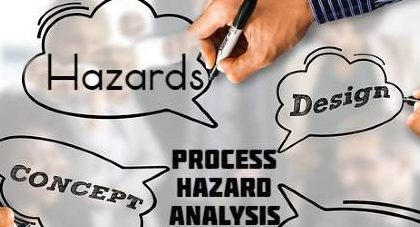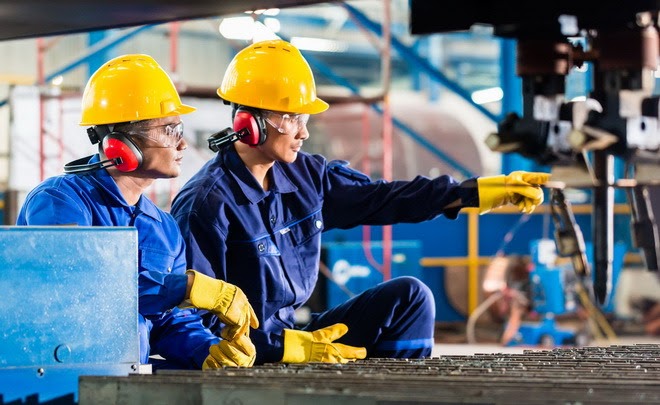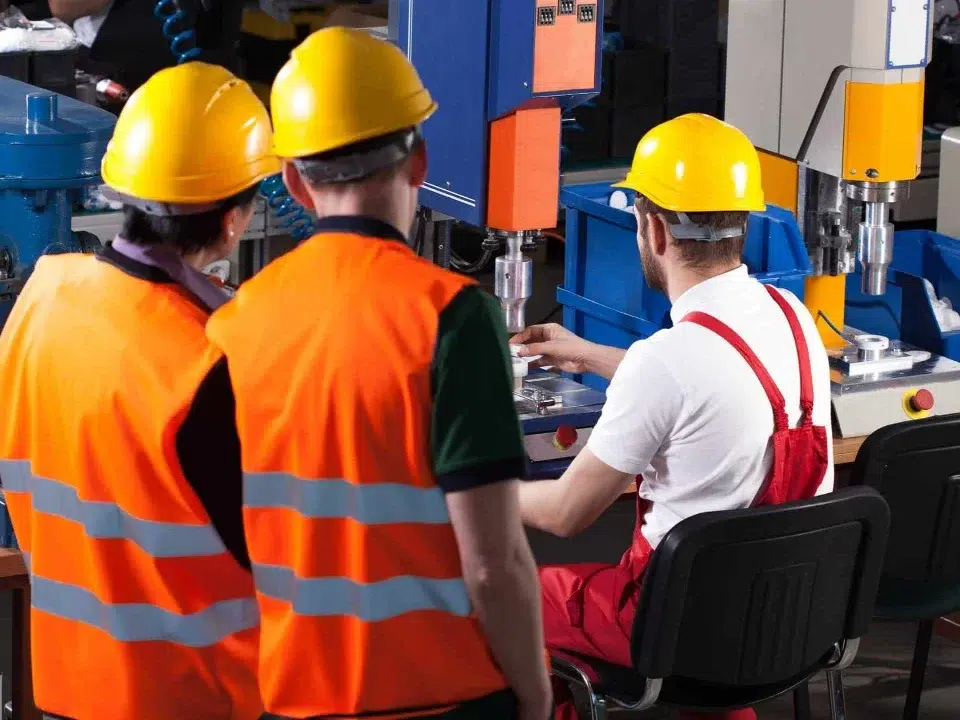Navigating the Complex World of Project Health, Safety, and Environment Review Reports: Expert Insights on Mitigating Risks

The Importance of Developing an Emergency Response and Disaster Management Plan (ERDMP) in Todays World
July 19, 2023
Beyond Compliance: The Safety Master’s Approach to Safety Excellence
July 20, 2023Navigating the Complex World of Project Health, Safety, and Environment: Expert Insights on Mitigating Risks
Top Safety Consultant of India
Safety Consultant PNGRB Guidelines
In this article, we delve into the intricate web of project health, safety, and environment, shedding light on the complexities that often come hand-in-hand with these critical aspects. As experts in the field, we aim to provide you with invaluable insights on navigating these challenges and mitigating risks effectively. By delving into key strategies, industry best practices, and emerging trends, we promise to equip you with the knowledge and tools needed to maintain a safe and healthy work environment while minimizing potential hazards. Get ready to take a deep dive into the world of project HSE, as we unveil expert insights that will revolutionize your approach to risk management.
Introduction
Step into the intricate world of project health, safety, and environment (HSE), where risks lurk around every corner and navigating them requires finesse and expertise. In this enlightening journey, we will unravel the complexities of HSE within project environments and delve into expert insights on how to mitigate potential threats. Brace yourself for a captivating exploration that promises to equip you with invaluable knowledge.Are you prepared to embark on an intellectual odyssey through the realms of project HSE? If so, prepare yourself for a bountiful harvest of wisdom as we navigate the importance of mitigating risks in this critical field. Within these pages, we will uncover the key elements necessary for identifying and assessing potential hazards, training project personnel on HSE practices, ensuring compliance with environmental protection standards, engaging stakeholders in collaborative efforts, and exploring cutting-edge technologies revolutionizing project HSE
Understanding Project Health, Safety, and Environment (HSE)
A Multifaceted Perspective on Mitigating Risks Within the vast realm of project management, the concept of Health, Safety, and Environment (HSE) takes center stage as a crucial component for successful execution. HSE encompasses a comprehensive approach to promoting the well-being of individuals involved in a project, safeguarding the environment, and ensuring compliance with relevant regulations. Its significance lies not only in preventing accidents or injuries but also in fostering a culture of responsibility and sustainability.
Moreover, an essential aspect of comprehending project HSE lies in providing adequate training and education to all personnel involved. Empowering team members with knowledge about best practices for handling hazardous substances or operating heavy machinery not only enhances their safety but also instills confidence in their ability to navigate potentially challenging situations. By prioritizing continuous learning and skill development in HSE matters, projects can flourish while reducing incidents effectively.
In conclusion, understanding project Health, Safety, and Environment requires an integrative approach that considers both individual well-being and environmental preservation. By promoting a culture rooted in responsibility and accountability while equipping teams with knowledge through rigorous training programs, organizations can successfully navigate complex projects while upholding high HSE standards. Embracing this holistic perspective not only ensures risk mitigation but also fosters sustainable growth in the ever-evolving landscape of project management.
The Importance of Mitigating Risks in Project HSE
In the tumultuous world of project execution, where multiple stakeholders converge, mitigating risks becomes a paramount concern for ensuring the overall health, safety, and environmental well-being. The consequences of overlooking or underestimating potential hazards can be disastrous and far-reaching. Thus, it becomes imperative to adopt a proactive approach towards identifying and addressing risks in project HSE.
Adopting an optimistic outlook on risk mitigation allows project teams to harness their collective expertise and devise innovative solutions. By proactively managing risks, projects can create a culture of safety where personnel feel empowered to identify potential hazards and propose novel approaches to avoid them. Emphasizing risk mitigation as an integral part of project planning fosters a sense of unity among team members who collaborate harmoniously towards achieving shared goals. Ultimately, by prioritizing risk management in project HSE endeavors, we pave the way for success that not only benefits present stakeholders but also leaves a lasting positive impact on future endeavors within our industries.
Identifying and Assessing Potential Hazards in Project Environments
In the intricate realm of project health, safety, and environment (HSE), one of the critical steps to ensure success is the identification and assessment of potential hazards lurking within project environments. This process involves a meticulous examination of various factors that could pose risks to the well-being of both workers and the natural surroundings.
Firstly, it is essential to conduct a thorough site analysis, taking into account geographical considerations such as climate, terrain, and proximity to vulnerable ecosystems. Understanding these elements aids in recognizing potential threats such as extreme weather conditions or fragile ecological systems that require special care.
Secondly, a comprehensive hazard assessment involves scrutinizing potential hazards specific to each project phase. From initial construction activities to ongoing operations, diligent evaluation ensures proactive management of risks. This can encompass identifying machinery vulnerabilities, chemical exposure risks, or even psychological stressors for personnel working in high-pressure environments.
By systematically unraveling these complexities and taking preemptive measures, projects can mitigate risks effectively and foster an atmosphere of safety for all involved. Ultimately, this commitment towards hazard identification sets the stage for successful outcomes while upholding environmental integrity – an inspiring testament to human ingenuity coupled with responsible stewardship.
Training and Educating Project Personnel on HSE Practices
As the cornerstone of any successful project, well-trained and educated project personnel play a vital role in ensuring Health, Safety, and Environment (HSE) standards are met. This section explores the various methods and approaches employed to equip individuals with the necessary knowledge and skills to navigate the complex realm of HSE.
To embark on this journey towards competence, project teams must undergo comprehensive training programs that cover a wide range of topics. These programs encompass fundamental principles of risk assessment, hazard identification, emergency response procedures, and effective communication strategies. By instilling a deep sense of responsibility for personal safety as well as the safety of others, these training initiatives create a culture where HSE practices become second nature.
Furthermore, educational campaigns rooted in interactive workshops and seminars can enhance engagement among project personnel. Emphasizing real-life scenarios allows individuals to grasp the practical implications of HSE practices. Sharing success stories, lessons learned from past incidents or near-misses fosters a proactive mindset that empowers project members to identify potential hazards proactively. Through continuous education and enrichment programs tailored to specific roles within projects, organizations can cultivate a highly skilled workforce committed to mitigating risks effectively.
Ensuring Compliance with Environmental Protection Standards
With increasing global awareness about environmental conservation, ensuring compliance with environmental protection standards has become paramount in project execution. Adhering to these standards not only mitigates the risks associated with environmental damage but also contributes to sustainable development. For instance, implementing rigorous waste management protocols can minimize pollution and promote a healthier ecosystem for future generations.
To achieve compliance, project teams must conduct thorough environmental impact assessments and adopt proactive measures to prevent or mitigate potential harm. This includes employing advanced technologies for monitoring air and water quality, implementing eco-friendly construction practices, and using renewable energy sources whenever possible. By prioritizing environmental protection, organizations can showcase their commitment to responsible project management while simultaneously inspiring others to follow suit in preserving our planet’s natural resources.
Collaborative Efforts: Engaging Stakeholders in Project HSE
When it comes to ensuring project health, safety, and environment (HSE), the collaboration of stakeholders becomes paramount. The success of any endeavor relies on the active participation and engagement of all parties involved. From project managers to contractors, from environmentalists to regulatory bodies, everyone plays a crucial role in mitigating risks and safeguarding the well-being of both workers and the environment.
Creating a culture of collaboration starts with fostering open lines of communication among stakeholders. Effective dialogue allows for the exchange of ideas, concerns, and best practices. Encouraging regular meetings and forums where all parties have an opportunity to voice their opinions can lead to innovative solutions that address potential HSE challenges.
Emerging Technologies and Innovations in Project HSE
In the ever-evolving landscape of project health, safety, and environment (HSE), emerging technologies have become a game-changer. These cutting-edge innovations not only enhance the efficiency and effectiveness of HSE practices but also revolutionize the way risks are mitigated. One such groundbreaking technology is the implementation of drone surveillance systems. Equipped with high-resolution cameras, these aerial marvels provide real-time monitoring of project sites, allowing for quick identification of potential hazards and prompt corrective actions. This technological advance not only improves safety but also reduces operational costs by minimizing manual inspections.Another remarkable innovation lies in the utilization of virtual reality (VR) training programs for HSE education. Through immersive simulations, project personnel can practice emergency response procedures in a safe yet realistic environment. This interactive training fosters a deeper understanding of potential risks and equips individuals with the necessary skills to act swiftly and effectively during critical situations. By embracing VR technology, project teams can elevate their HSE performance while instilling a culture that prioritizes safety.
Conclusion
In the realm of project health, safety, and environment, navigating the complex landscape of risks can be a daunting task. However, armed with expert insights and a commitment to mitigating these risks, project teams can forge ahead with confidence. By diligently identifying and assessing potential hazards, providing comprehensive training to project personnel, ensuring compliance with environmental protection standards, and engaging stakeholders in collaborative efforts, we can create a safer and more sustainable future for our projects. As emerging technologies continue to revolutionize the field of project HSE, there is an optimistic horizon where innovation meets safety. By embracing these advancements and constantly adapting our practices to meet new challenges, we can build a world where every project is not just successful but also promotes the well-being of people and the planet.
At TSM TheSafetyMaster Private Limited we offer following services
TSM TheSafetyMaster® Private Limited
DUST EXPLOSION HAZARD ASSESSMENT
ELECTROSTATIC HAZARD ASSESSMENT
Unit No 221-451-452, SPL1/J, 2nd & 4th Floor, Sunsquare Plaza Complex, RIICO Chowk, Bhiwadi 301019, Rajasthan, India
Phone: +91 1493 22 0093
Mobile: +91 7665231743/9413882016
Email: info@thesafetymaster.com




